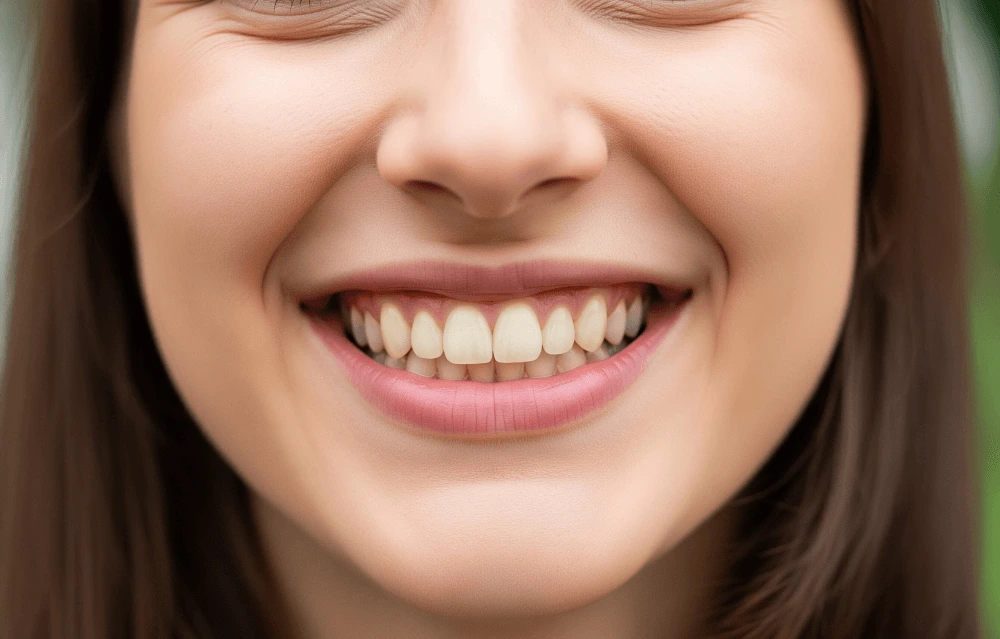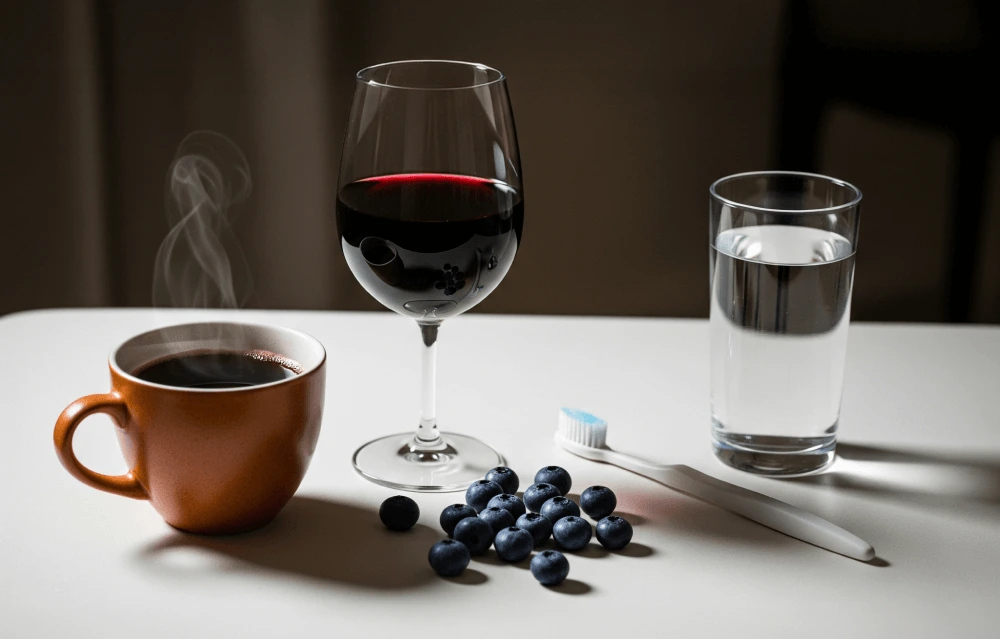What’s With Those Pesky Yellow Canines?
15 Aug 2025
Have you ever looked in the mirror and noticed that your canine teeth, those pointy ones near the front, seem a shade or two yellower than your other teeth?
It’s a very common observation, and if you’re wondering, “Why are my canines yellow?”, you’re not alone. While it can be a little concerning, it’s often due to perfectly natural reasons.
At Greenspoint Dental, we understand that a bright, uniform smile can boost your confidence. Let’s go into the science behind why your canine teeth are yellow and what you can do about it.
The Science: “Why Are My Canines More Yellow Than My Other Teeth?”
The primary reason why your canines are more yellow than your incisors (the very front teeth) comes down to basic tooth anatomy:
- Dentin vs. Enamel: Every tooth has two main layers: the outer, protective layer called enamel, and the softer, yellowish layer underneath called dentin. Enamel is naturally translucent, allowing the color of the dentin to show through.
- Thicker Dentin in Canines: Your canine teeth are built for strength and tearing food, so they have a naturally thicker layer of dentin compared to your thinner, sharper incisors. More dentin means more of that natural yellow hue showing through the enamel.
- Thinner Enamel (Sometimes): While canines have thick dentin, their enamel layer can sometimes be slightly thinner or less opaque than that of other teeth, further emphasizing the underlying yellow dentin.
So, while all your teeth have dentin, the proportion of dentin to enamel in your canines makes them appear inherently more yellow. This is completely normal and healthy!

Other Factors Contributing to Yellow Canines (and All Teeth)
While natural anatomy is the main culprit for canines, several other factors can contribute to overall tooth discoloration, including your canines:
- Dietary Stains: Regular consumption of dark-colored foods and beverages can stain your enamel. Culprits include:
- Coffee and Tea
- Red Wine
- Dark Sodas
- Berries (blueberries, blackberries)
- Soy Sauce and Curry
- Tobacco Use: Smoking or chewing tobacco is a major cause of yellow, brown, and even black tooth stains. The tar and nicotine quickly absorb into the enamel.
- Poor Oral Hygiene: Infrequent or improper brushing and flossing allow plaque and stain-causing particles to accumulate on the tooth surface, leading to discoloration.
- Certain Medications & Oral Rinses: Some antibiotics (like tetracycline, especially if taken during tooth development), antihistamines, antipsychotics, and high blood pressure medications can cause tooth discoloration. Certain mouthwashes containing chlorhexidine can also lead to staining.
- Aging: As we age, our tooth enamel naturally thins, allowing more of the yellow dentin to show through. Years of stain accumulation also contribute.
- Genetics: Just like hair and eye color, your natural tooth shade is partly determined by your genes. Some people simply have naturally more yellow teeth due to the inherent color of their dentin.

What Can You Do About Yellow Canines?
If you’re concerned about why your canine teeth are yellow or the overall brightness of your smile, Greenspoint Dental offers effective solutions:
- Maintain Excellent Oral Hygiene: Brushing twice daily with a fluoride toothpaste and flossing daily can prevent new stains from forming and remove surface discoloration.
- Rethink Your Diet & Habits: Reducing consumption of highly staining foods and drinks, or rinsing your mouth with water immediately after, can help. Quitting tobacco products will significantly improve tooth color.
- Professional Teeth Whitening: This is often the most effective and safest way to brighten your smile. At Greenspoint Dental, we offer professional teeth whitening treatments that can safely and effectively lift deep-seated stains, brightening all your teeth, including those canines. Our customized approach ensures optimal results while minimizing sensitivity.
- Cosmetic Solutions: For more severe or intrinsic discoloration that doesn’t respond to whitening, options like dental bonding or porcelain veneers can provide a completely new, uniformly bright appearance.

Ready for a Brighter Smile?
Don’t let the natural color of your canines or any other discoloration hold you back from a confident smile. Understanding why your canines are yellow is the first step.
The next step is to explore personalized solutions.
Find out more about teeth whitening , or schedule a consultation at our North Houston dentist. We will assess your unique smile, discuss your concerns, and recommend the best treatment plan to achieve the bright, uniform smile you desire!
Related Blog Articles